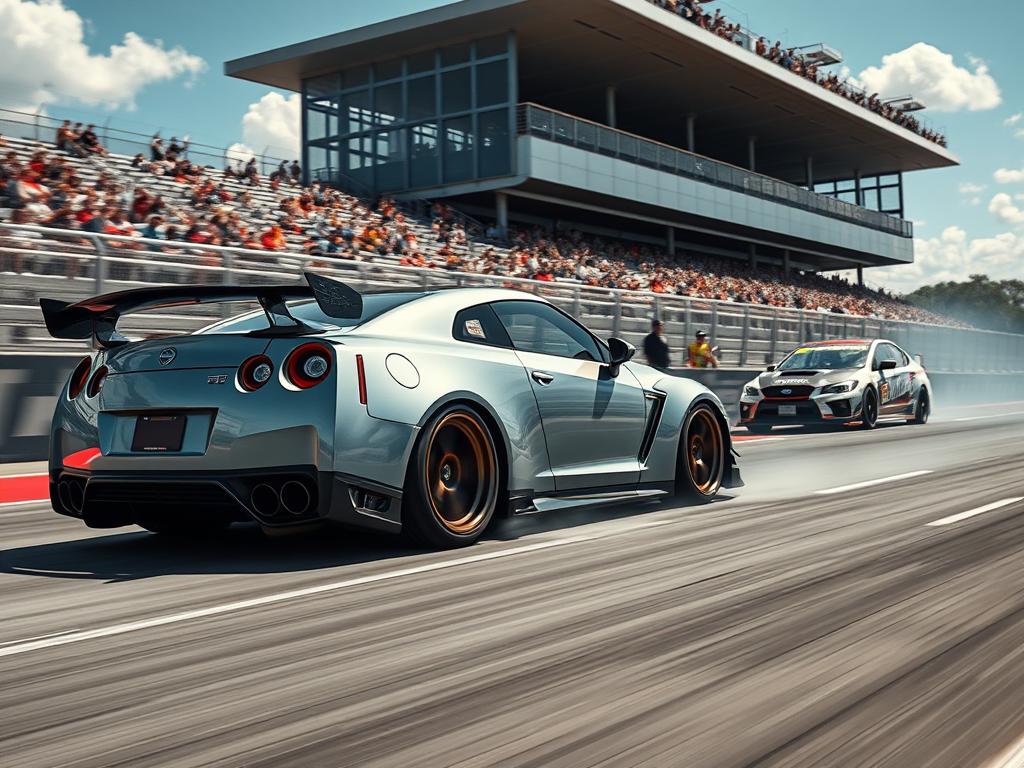Unleashing the full potential of your car is a thrilling pursuit, whether you’re tearing up the track or cruising the streets. In 2025, automotive enthusiasts are constantly seeking ways to enhance their vehicle’s performance, handling, and overall driving experience. From engine modifications to suspension upgrades, the possibilities are endless. This blog post dives into the essential modifications that can transform your car into a true performance machine, blending track capabilities with street practicality.
We’ll explore the latest trends in car modification, focusing on key areas such as power enhancement, handling improvements, braking upgrades, and aesthetic enhancements. We’ll also consider the balance between performance gains and daily drivability, ensuring your modified car is enjoyable in all situations. Whether you’re a seasoned gearhead or new to the world of car modification, this guide will provide valuable insights and practical advice to help you achieve your automotive goals.
Let’s embark on this exciting journey to elevate your car’s performance to new heights. This blog post will cover engine tuning, suspension upgrades, braking enhancements, wheel and tire selection, aerodynamic improvements and interior and exterior styling.
Engine Tuning and Power Enhancement
The heart of any performance car lies in its engine. Engine tuning and power enhancement are crucial for unlocking hidden potential and maximizing performance. Modern engine control units (ECUs) can be remapped to optimize fuel delivery, ignition timing, and boost levels (for turbocharged engines), resulting in significant power gains. Popular options include ECU flashing, piggyback systems, and standalone engine management systems.
Upgrading internal engine components, such as forged pistons, connecting rods, and camshafts, can further enhance power and durability. These modifications allow the engine to withstand higher levels of stress and strain, enabling it to produce more horsepower and torque. Intake and exhaust modifications, such as high-flow air filters, performance headers, and cat-back exhaust systems, can also improve engine breathing and reduce backpressure, resulting in additional power gains. According to a recent article in Car and Driver, ‘Proper engine tuning can unleash up to 20% more horsepower in some vehicles.’
However, it’s essential to consider the trade-offs between power gains and reliability. Aggressive engine tuning can put extra stress on engine components, potentially leading to premature wear and tear. It’s crucial to work with experienced tuners and mechanics to ensure that any engine modifications are performed correctly and safely. Remember to research local laws and regulations regarding engine modifications to ensure compliance.
Suspension Upgrades for Improved Handling
Handling is just as important as power when it comes to performance cars. Suspension upgrades can significantly improve a car’s handling characteristics, enhancing its cornering ability, stability, and overall driving experience. Lowering springs and coilover systems are popular options for reducing body roll and improving handling. Lowering the car’s center of gravity can also enhance its stability and responsiveness.
Upgrading the car’s shocks and struts can further improve handling and ride quality. Performance shocks and struts offer better damping control, reducing body roll and improving cornering grip. Adjustable shocks and struts allow drivers to fine-tune the suspension to suit their driving style and road conditions. Sway bars, also known as anti-roll bars, connect the left and right wheels and reduce body roll during cornering. Upgrading to stiffer sway bars can further improve handling and stability.
Bushings play a crucial role in the suspension system, connecting various components and allowing for controlled movement. Upgrading to polyurethane bushings can reduce flex and improve handling precision. However, polyurethane bushings can also transmit more noise and vibration into the cabin, so it’s essential to consider the trade-offs. A well-tuned suspension system can transform a car’s handling characteristics, making it more responsive, predictable, and enjoyable to drive.
Braking Enhancements for Superior Stopping Power
Stopping power is paramount for any performance car, especially on the track. Upgrading the braking system can significantly improve a car’s ability to decelerate quickly and safely. Big brake kits, which include larger rotors, calipers, and pads, offer increased thermal capacity and stopping power. These kits are designed to withstand the extreme heat generated during hard braking, reducing brake fade and improving overall performance.
Performance brake pads are another essential upgrade for improving stopping power. These pads offer a higher coefficient of friction, allowing them to grip the rotors more aggressively. However, performance brake pads can also produce more noise and dust than stock pads. Stainless steel brake lines can improve braking feel and responsiveness by reducing expansion under pressure. These lines provide a more direct connection between the brake pedal and calipers, resulting in more consistent braking performance.
Brake cooling is also crucial for maintaining consistent braking performance, especially on the track. Brake ducts and cooling plates can help to dissipate heat and prevent brake fade. Proper brake maintenance, including regular inspections and fluid flushes, is essential for ensuring optimal braking performance. According to a recent study by Motor Trend, ‘Upgrading to a big brake kit can reduce stopping distances by up to 20%.’

